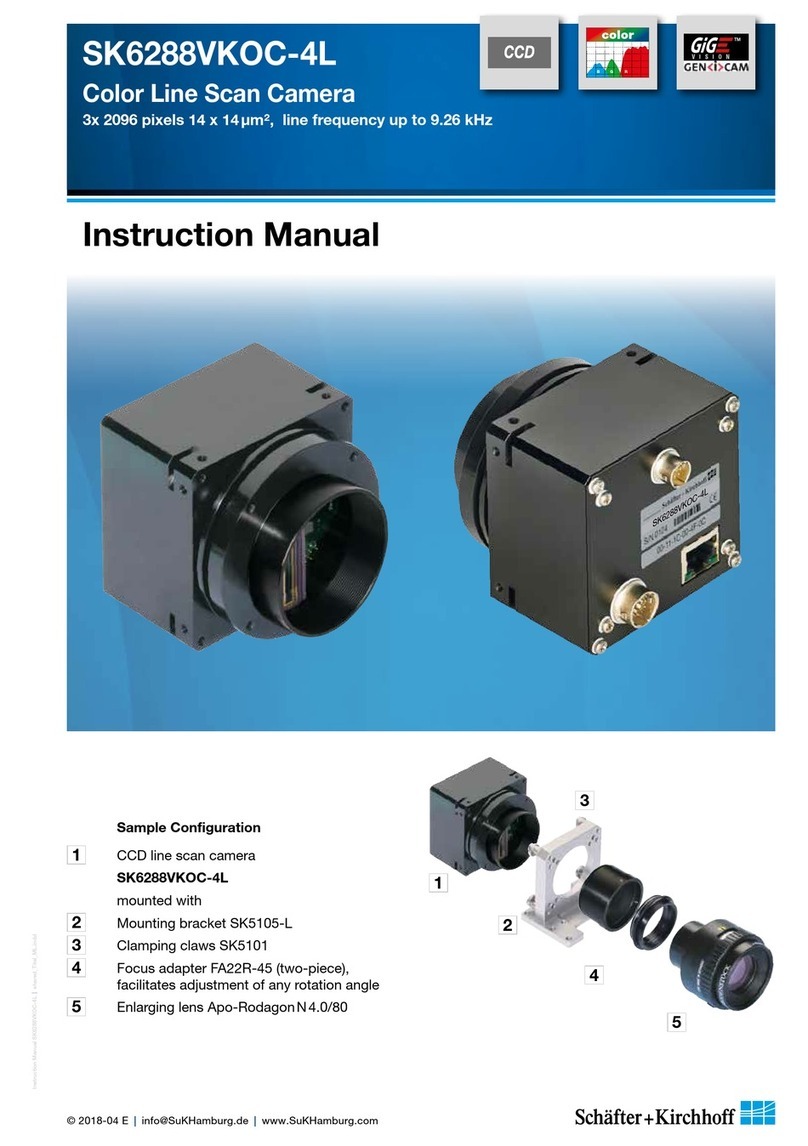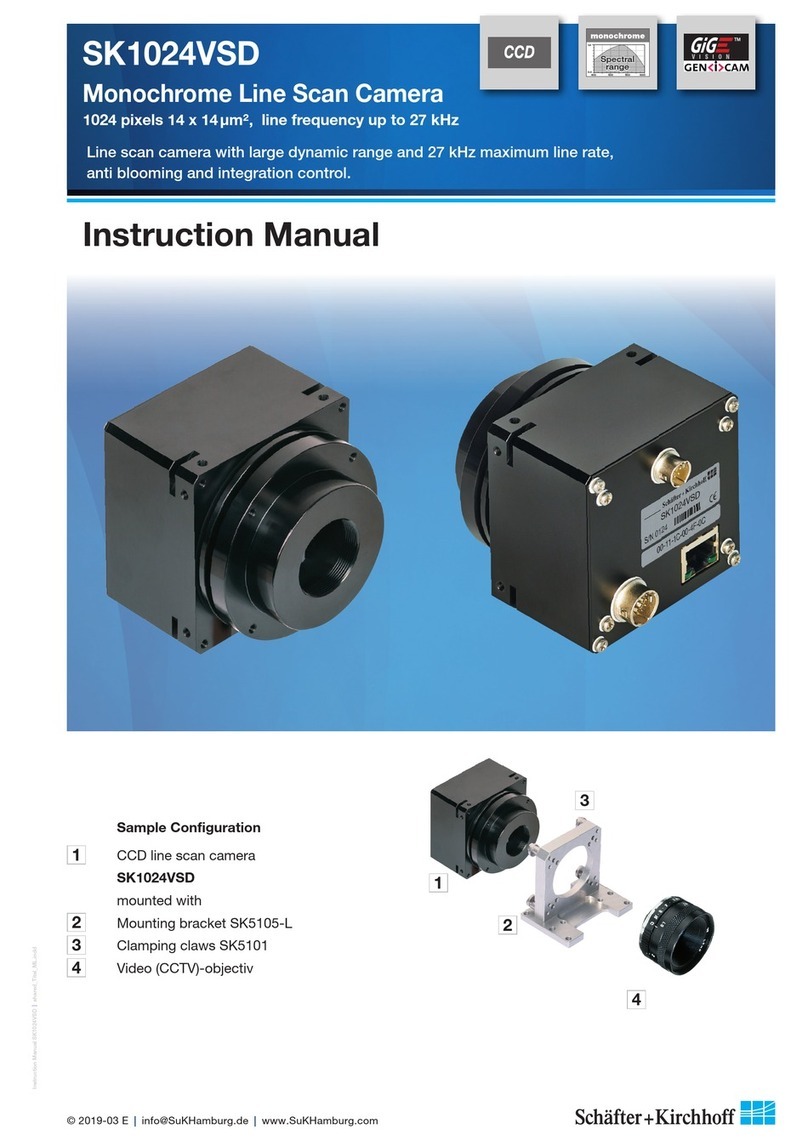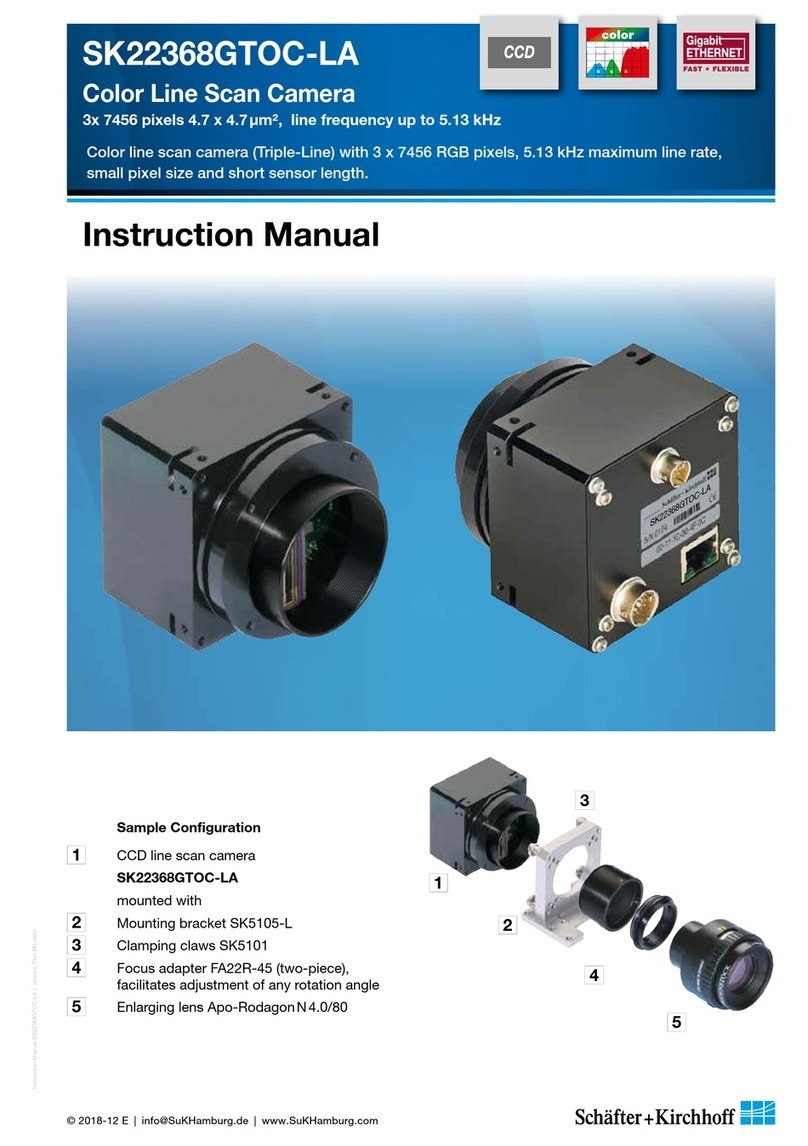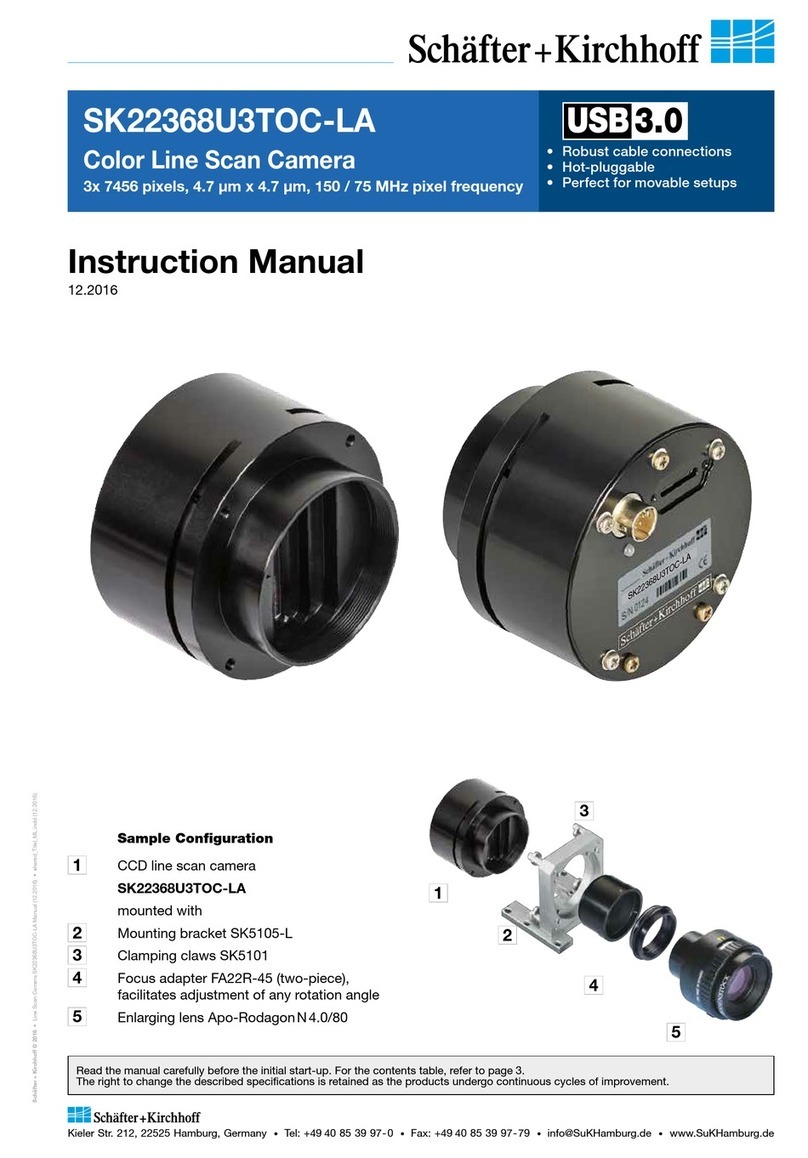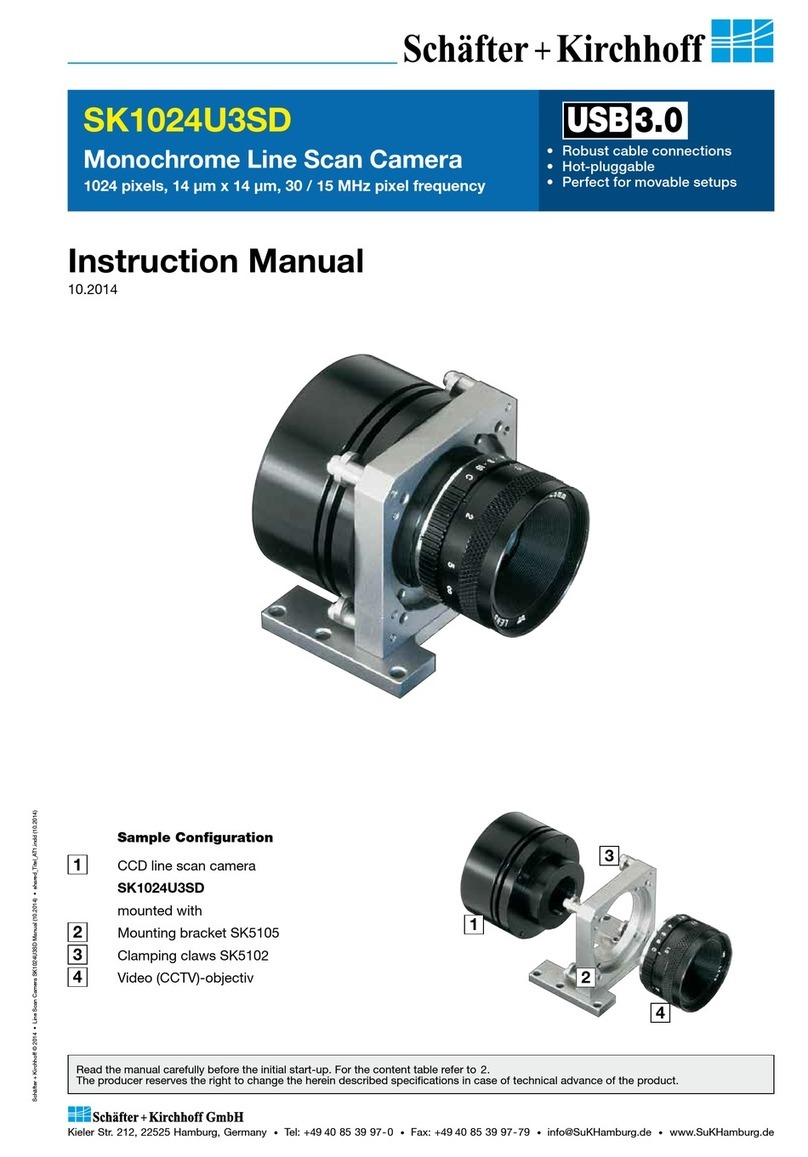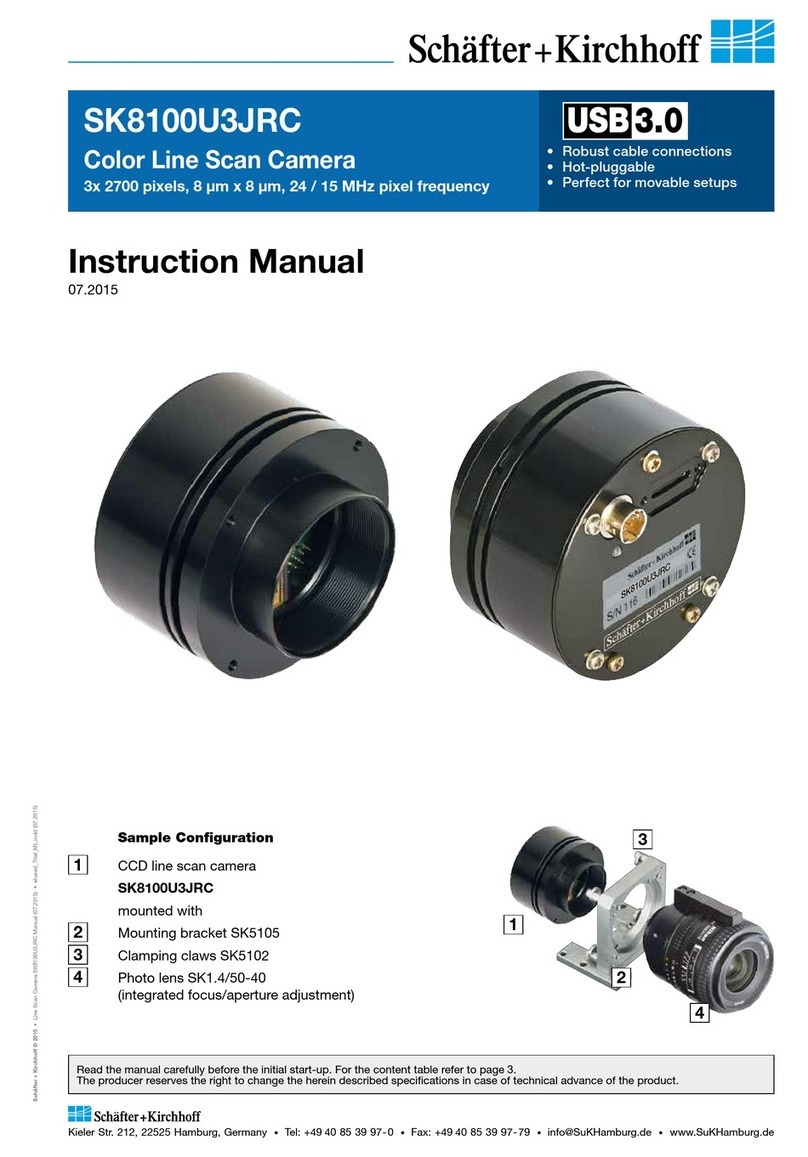Digital CCD Line Scan Camera SK 10680 DJR ( Rev.1.4. / 20.09.2005 ) - Manual Page 6
8. Blooming
Oscilloscopic display of line scan signals
(barcode illuminated with incident light),
SK 2048 DJRI
CCD line scan signal with increased illumination
in the center and sharp rising signal edges.
Zoomed detail from the center of the CCD line
scan signal in , integration time tA= 0.634 ms
Extended integration time tA= 2.419 ms. The sig-
nal edge is displaced slightly to the right. At an
overexposure of a factor of 3.8 the sensor starts
to bloom.
Overexposure caused by an increased integration
time results in signal deformations for sensors
without anti-blooming technology.
Charge by extreme overexposure penetrate the
following scan and cause an overload of the black
level pixel values. The offset control unit of the
camera is disturbed and the CCD line scan
camera supplies a reduced signal.
1
1
Blooming
Extended illumination of saturated pixels, which are
not able to accumulate further charge due to long
exposure, leads to charge overflow into adjacent
pixels. This effect is called blooming. Blooming
causes a corruption of the geometrical allocation of
image and object in the line signal.
CCD line scan cameras with anti-blooming sensors
direct the abundant charge to a ”drain gate”. Charge
overflow into adjacent, less illuminated pixels is
prevented. Depending on pixel frequency and
spectral range, overexposure up to factor of 50 can
thus be handled.
The CCD line scan cameras of the SK 10680DJR do not
contain anti-bloooming sensors. Nevertheless, they are
prevented from overexposure due to a special design.
DJR-cameras can be densed to a factor of 3.8, without
blooming the sensor.
Figure shows the line scan signal of a SK2048DJRI-
camera with increased illumination in the center. For a
better visualisation of the blooming effect the saturation
voltage of the sensor VSAT was reduced to roughly 90%
of the maximum ADC-voltage. Thus, even with overex-
posure the maximum of 255 of the 8-bit digitized signal
intensity will not be reached. In the central section the
sensor is on the verge of saturation.
The marked region from figure is zoomed in figure .
Here, the integration time tAamounts to 0.634 ms.
In figure the integration time was increased to tA
2.419 ms. Only from this point on the sensor starts to
bloom. The signal edge is displaced slightly to the right,
caused by excessive charge congesting the adjacent
pixels.
Even longer integration times result in an intolerable
deformations of the signal structures. In figure the
integration time was set to tA3.38 ms, corresponding in
an overexposure of a factor of 5.3.
Figure shows a phenomenon at extreme overexpo-
sure of CCD line scan cameras. The large charge
excess of the preceding scan leads in the shown sam-
ple to an overload of the pixels at the beginning of the
line. In this area the pixels determining the dark level are
located. These pixels are used as a reference for the off-
set control. The large dark level intensity induces a
reduction of the total signal intensity. Under these con-
ditions more light generates a smaller signal intensity at
the camera output.
In case of a very small output signal at operation start
up of the CCD line scan camera, an extreme overexpo-
sure can be the reason.
Consider:
CCD line scan cameras including anti-blooming sen-
sors can be densed to a factor of 50 before showing any
effect of blooming.
5
4
3
21
1
2
5
3
4
1
2
3
4
5
einsetzendes Blooming
dark level values raised by roaming change of preceding scan
